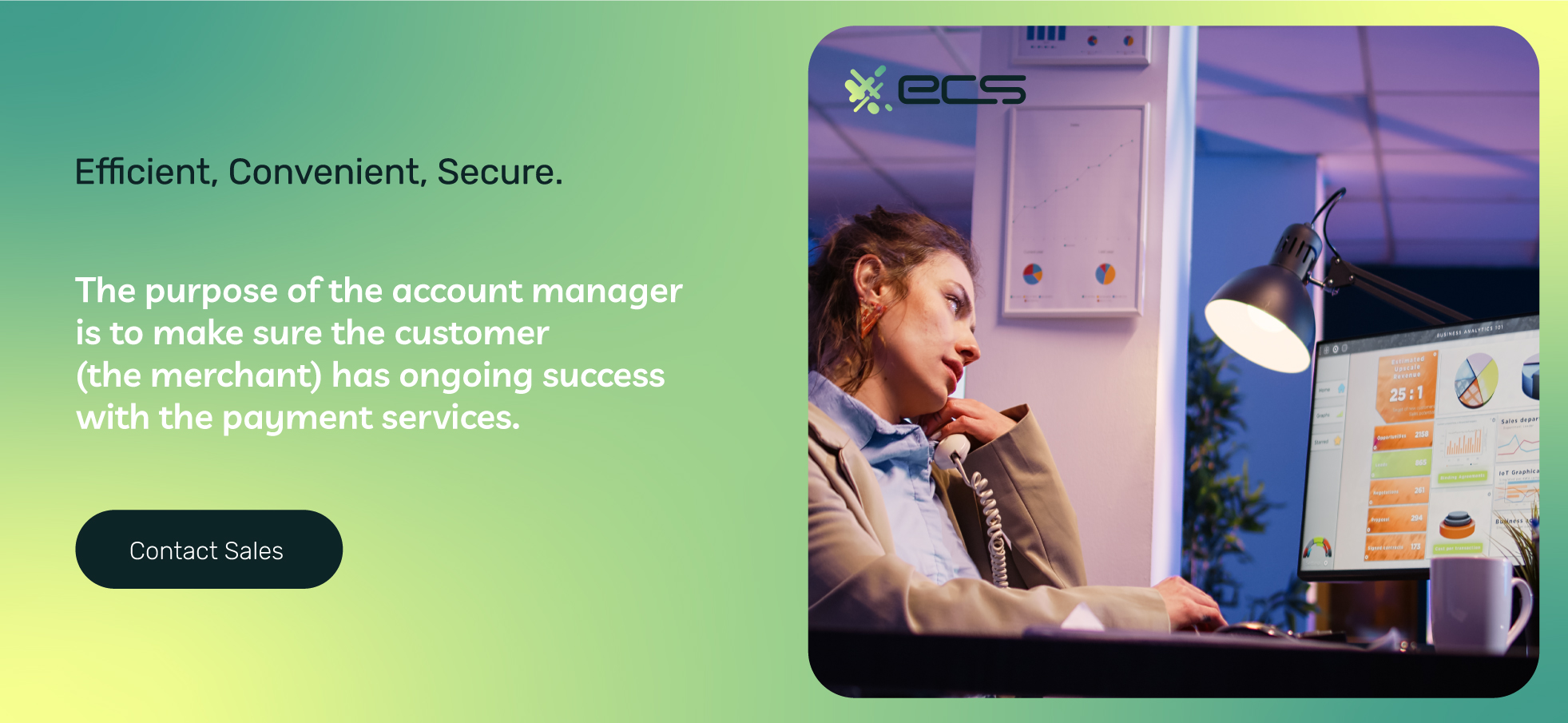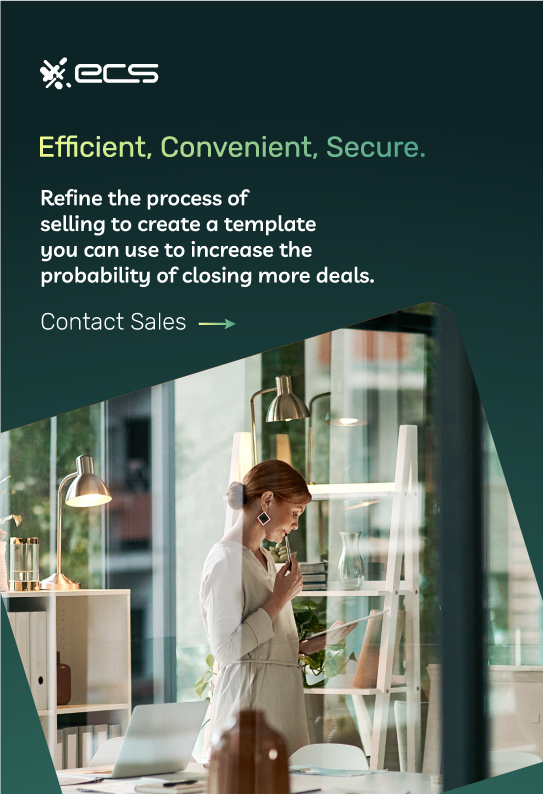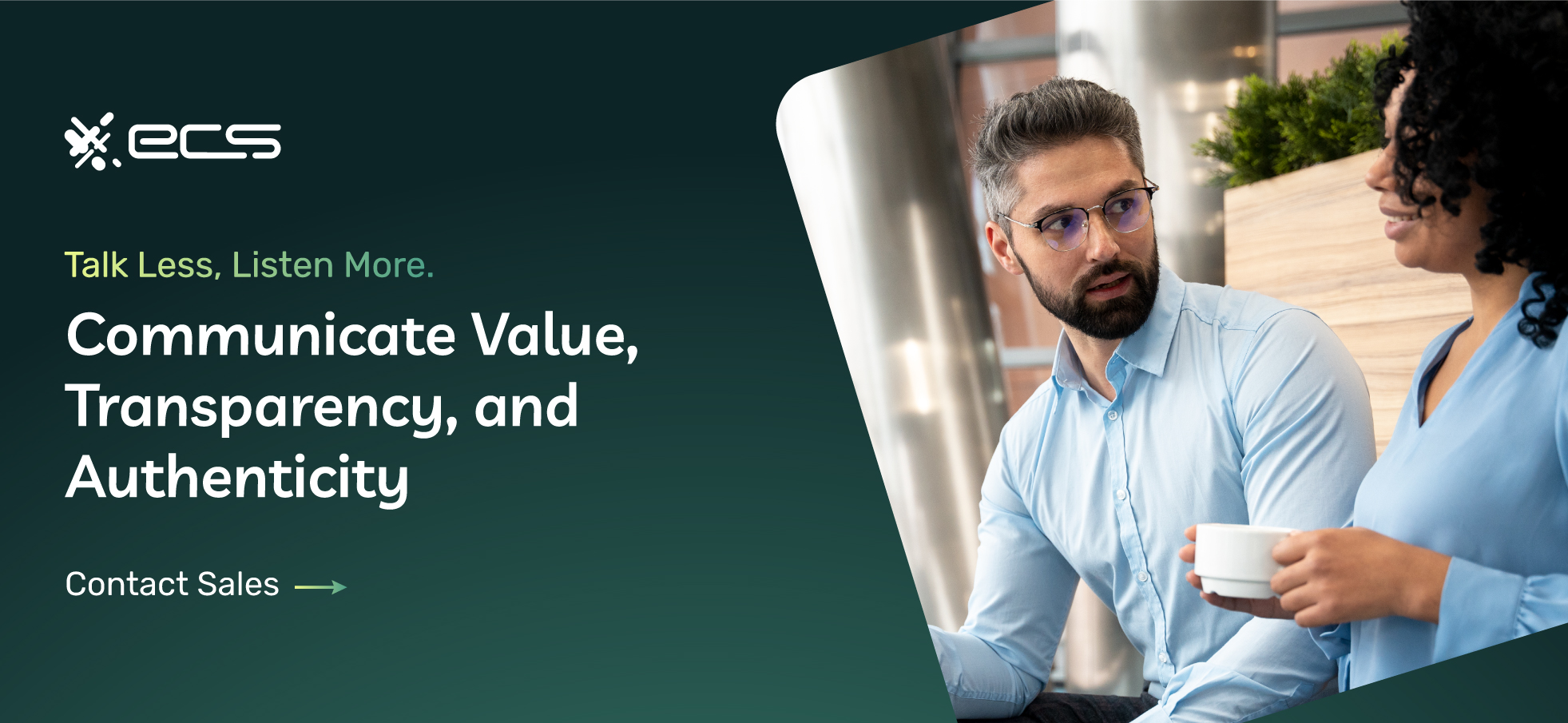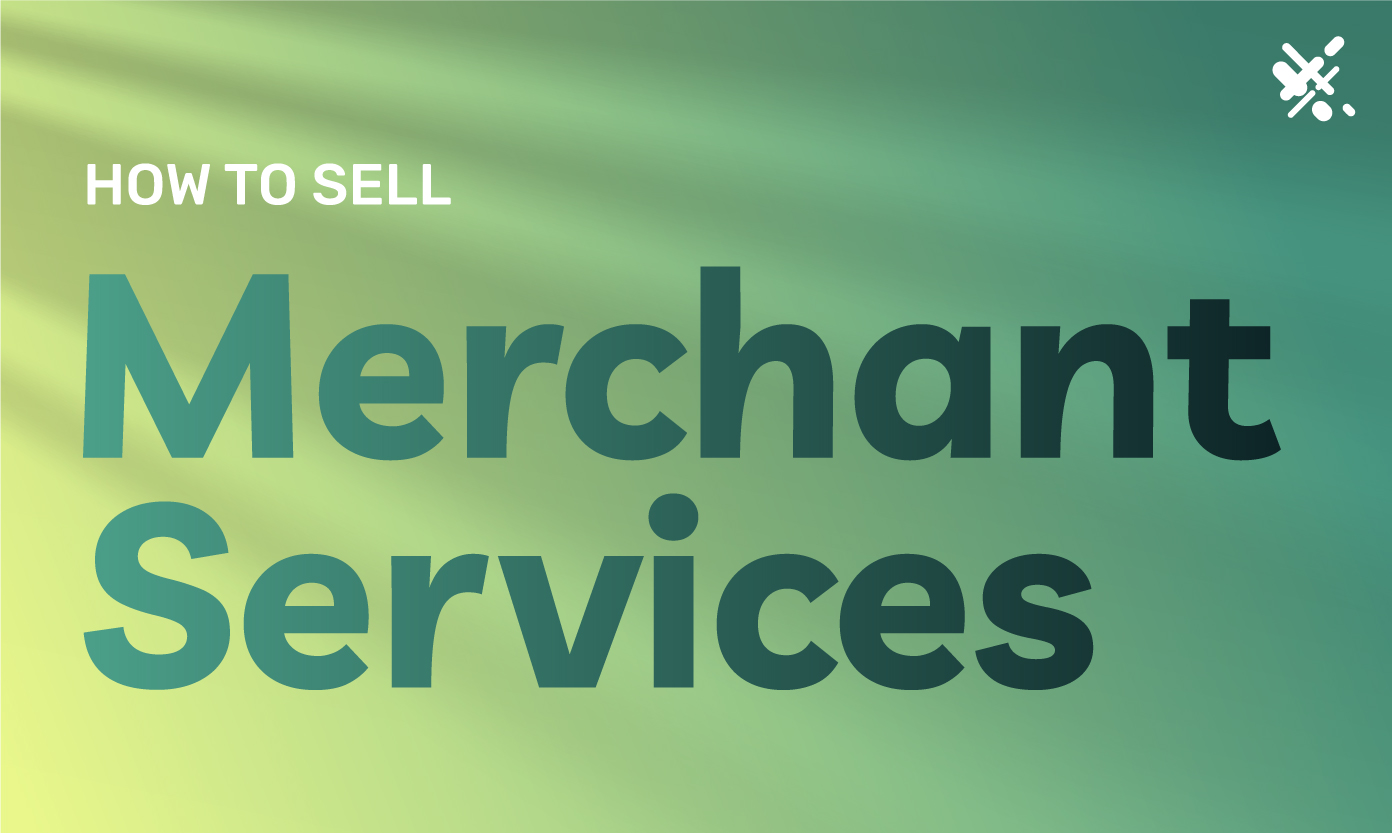Selling credit card processing has some overlap with B2B sales in general. Some considerations apply, specifically with selling payment processing. But first, we should specify what we mean by credit card processing sales or merchant services sales.
What Are Merchant Services Sales?
Merchant services companies are simply credit card processing companies. In most cases, merchant services offer a bit more for their merchants. Technically speaking, a payment processing company helps a business accept credit and debit cards in return for the products and services they offer. They do not necessarily provide other business and financial services.
Merchant services is a more broad term that can include payment processing. It might also include other things like fraud monitoring and prevention, software integrations, banking, and even lending. This lending might include consumer-facing point-of-sale loans. It might also include merchant cash advances.
To clarify one more term: merchant accounts are a different entity. These are accounts that temporarily hold funds for merchants before payments settle in their business accounts.
However, a company that provides merchant services may also include merchant account services. Alternatively, merchant accounts might be provided by your bank. They, too, have sales teams that engage the business community by selling merchant accounts.
Merchant Services Industry Broad Overview
The global market for merchant services might surpass $38 billion in 2025 with a CAGR of 9.75%. Note that this does not include the worth of card networks like Visa or Mastercard. To put things a little perspective, the financial services sector overall is expected to grow at a rate of 7.4% in the same period.
This accelerated growth in the concentrated area of merchant services may point to the booming viability of young startups. Some of the largest payment processors include companies like PayPal, Shopify, and Amazon. Technically speaking, many of these are actually payment aggregators (more on that momentarily). But there are probably over 1,300 individual payment processors.
This is the number of independent sales organizations (ISOs) that have registered with Visa to facilitate card payments. Some ISOs are selling their own products and services, while others are resellers selling whitelisted goods and services. Sales strategies will differ between the two.
Now, back to aggregators versus payment processors. Aggregators do not facilitate individual relationships between a business and the banking system. Rather, they bundle all their customers under their own merchant ID.
This is one reason that aggregators are more aggressive about bouncing suspicious merchants out of the relationship. They cannot afford to compromise their own reputation.
By contrast, an ISO facilitates an individual relationship between the merchant and the payment ecosystem. The merchant will have their own merchant ID and a merchant category code or MCC that reflects the type of business they run.
In general, the relationship between an ISO and its customers is much, much, much (did we say that enough) more personal than that between a merchant and a faceless, soulless entity like Amazon (no offense, Amazon shoppers).

Who’s Who In Credit Card Machine Sales
There are typically several players in payment processing sales. Not every company will have the same number of people involved. Smaller companies will have smaller sales teams, while larger companies will have larger sales teams.
Some companies are local, selling or reselling merchant services to businesses in their city or state. Others are national or international, with sales teams in different regions. One could argue that the star player in the sales process is the account manager.
The account manager becomes the point person in the relationship between the ISO and the merchant customer. They are the ones who primarily meet with the merchant, demonstrating the product, asking the right questions, and answering questions.
If the merchant becomes a customer, the account manager may become the dedicated point person for the life of the contract. As the name implies, the purpose of this account manager is to make sure the customer (the merchant) has ongoing success with the payment services. This will require proactive involvement on the part of the account manager.
Then there are sales engineers. These people work with the merchant and the account manager to tailor and tweak the payment gateways (hardware and software) to the needs of the merchant. Sales engineering does not require hard selling skills but usually does require a blend of technical know-how, interpersonal skills, and emotional intelligence.
Other Supporting Roles in Merchant Services Sales
Before the sale, there is demand generation, or demand gen for short. In some companies, the account manager is solely responsible for drumming up their own business. They might make cold calls, go door-to-door, or create an online marketing funnel using social media.
However, in larger companies, there are sales reps who do some of this work in the trenches. These reps make cold calls (inside sales) or go door to door (field sales) to generate “demand” or interest in the credit card processor. They will then pass the potential customer on to the account manager for a demo.
There are potentially other people involved. The deal desk sets up the contract. Renewal managers work with customers whose contracts are ending soon or who might be dissatisfied with their credit card transactions.
Sales support people develop and refine the sales process used by the ISO. Then there are marketing people who generate some of the material sales reps might post online or disseminate in person.
A Lifetime Relationship
Remember that selling credit card terminals is just one part of merchant services sales. There might be other products that can enrich the customer experience, such as accounting and inventory integrations, loans, and other types of hardware. This will vary from industry to industry. For example, in the restaurant business, additional pieces of hardware could include a kitchen display system.
The account manager (and the ISO as a whole) needs to keep in mind that selling payment processing is not a one-and-done affair. It is ideally a lifetime relationship where the provider can bring new products and services to the customer’s attention over time.
The account manager should keep in touch with the business proactively and not just as a customer service associate. They should periodically meet with the customer and listen to see if there is anything else within the world of credit card processing services they can offer.
How To Sell Merchant Processing
Let’s look at a few major pointers for selling merchant services.
Tip #1: Identify Your Market and Your Customers
All sales fill a need. Disingenuous selling involves pushing products or services that customers do not need. But genuine sales involve uncovering a need through a conversation and addressing it through a solution. In this case, that need is merchant services.
Luckily, millions of businesses need payment processing, whether a startup business that has never had a payment processor or an established business that has a payment processor but would benefit from a better one. The approach you take with each business is going to be different since they are coming to the conversation with different perceptions, goals, and business needs.
There are also different-sized businesses and businesses going through different phases of growth. Some businesses have a single storefront and will never grow beyond that (such as a family-owned restaurant). Others may have 10-20 locations already and are about to reveal a franchising model that will take them to a footprint of hundreds or thousands of locations (this is the story of most fast-food venues).
Then, there are different types of businesses. These different businesses will need different types of hardware and software. For instance, a contracting, home repair, or home maintenance type of business will need a lot of mobile payment processing solutions.
A doctor’s office will need something that integrates with their medical record-keeping systems and insurance remissions. A grocer might want to implement self-checkout solutions. And so on, and so on.
Tip #2: Identify Your Customers’ Pain Points
Pain points are the problems that a business is facing. This pain point will derive from the type of business, its size, its own market, and other factors. For instance, the pain point of a contractor might be that customers need to call the office to make a payment (the solution would be mobile payment processing solutions).
The pain point of a grocer might be antiquated POS hardware that is susceptible to card skimming and takes too long to process each payment (the solution is contactless, self-serve stations). The pain point of a preschool might be the lack of an online portal parents can use to set up automated, recurring payments. And so on, and so on.
Successful ISOs typically do not try to make everyone happy. They often pick one or a few types of businesses to work with. Eventually, they might branch out to other industries. Typically, a sales team will find that they have more success when they get to know a particular type of industry very well—the food business, medical offices, retailers, government institutions, and non-profits, as just a few examples.


Tip #3: Create an Efficient Sales Process
Once you have identified your target market and their potential typical pain points, it’s time to create a sales process. You cannot throw pasta at the wall and hope that it sticks—unless you are sort of crazed (artistic?) Chef Boyardee.
Rather, you have to create a process you can replicate. Refining the process will create a template that you can use to increase the probability of closing more deals. This is because you will use tactics that work again and again.
The things that don’t work, you won’t. The discovery of exactly “what” these things are will come from a mixture of research, experience, and innovation. ISOs typically have a sales process, some of which is generally similar to other sales organizations and some of which is uniquely proprietary.
Let’s start with prospecting. In some industries, sending emails goes nowhere, and phone calls are easy to ignore. Reps will have more success directly walking into a business. However, in other industries, walking into the business may present an inconvenience, and a preliminary phone conversation will be better received.
Other ISOs see more success with an inbound—as opposed to an outbound—sales process. Inbound sales will involve creating a marketing funnel. This might involve presenting some free information, such as an eBook or white paper.
The purpose of the marketing material is to hook a potential customer and capture their contact information. From there, you can engage them in a continuous stream of (usually email) drip marketing.
Other ISOs have the most success at tradeshows. This is an opportunity for some distraction-free, industry-specific B2B marketing. One rep can operate a booth, distributing promotional products, while the other(s) walk around networking.
Around 46% of tradeshow attendees are in senior management positions. This means that a tradeshow is your chance to meet with a potential decision-maker.
Collecting Feedback and Refining the Process
However, if you hook your potential customers—outbound, inbound, or trade shows—you will then move deeper into the sales process. For most ISOs, this includes some sort of demo. Are your demos more effective in person than over Zoom? Are there certain features that are better selling points than others?
There are lots of things to consider here, as you can see. For many small to midsize ISOs, there are actually too many variables to study for a complete picture. A sales enablement team or at least one person dedicated to sales enablement can look at the process and help analyze what works and what does not.
The key to opening this door is sales stats. Stats provide the data points you need to paint a complete picture. There are many cloud-based software solutions that can help compile data points. Some of these are industry-specific.
Salesforce, Oracle, Microsoft, SAP, and Adobe all provide CRM solutions—customer relationship management. They also often create the “in-house” software that other large organizations use. And they also have a family of cloud-based CRM solutions that small and midsize businesses can use.
Tip #4: Talk Less, Listen More
This is not about mystical, law-of-attraction meditations (although numerous sales gurus such as Napoleon Hill and Stephen Covey have espoused such tactics). Rather, this is about conversing with customers with active listening.
An inexperienced sales rep may conduct an “information dump.” This involves bombarding the customer with selling points. These selling points may not even be relevant to the customer, and they may be overwhelmed.
Active listening is a far more effective strategy used by experienced sales reps. The best way to sell merchant services (or anything really) is to talk to your potential customers and learn about their businesses. Sales reps should not think of themselves as someone selling credit card machines. They should think of themselves as problem solvers.
Asking the right questions is a big part of this discovery process. You should ask open-ended questions that get the customer talking. These are questions that don’t end with a mere “yes” or “no.”
Those types of questions are close-ended. Close-ended questions can easily turn into a proverbial “breadcrumb trail” that is quite obvious to the customer. They may feel that you are trying to nudge them into something.
By contrast, open-ended questions get them to talk about their business. ISO agents or sales reps can use this conversation to search for the unique “pain points” that bother them. Instead of asking, “are you happy with your current payment processing rates,” you could ask something like, “tell me about your current transaction fees.”
An effective salesperson should only be talking 25% or less during a sales conversation. The rest of the time, they should engage in asking the right questions and active listening. The customer will feel more invested in the problem-solving and more receptive to any presented solutions.
Tip #5: Provide Compelling Case Studies
A sales rep getting closer to the deal might still be tempted to conduct a late-game information dump. This is usually still not a good idea. They should discuss the particulars and details of a contract at a later point. A more effective strategy for delivering some of the details is to do so through case studies.
Case studies are examples of other businesses that have seen success with your merchant processing. Case studies can show how revenues have increased by dollar amounts or percentages, how chargebacks have dropped, and how average transaction sizes have increased. There are a number of positive stats you could showcase here. Ideally, they should relate to some of the pain points unturned in the conversation.
For example, during the course of a conversation, you might uncover that a cash-heavy business is struggling with revenue. Expanding their footprint is not an option, and the market is already saturated with competitors. Could they possibly explore increasing the average ticket size? This is the time to cite a case study of a business that had success increasing ticket sizes with credit and debit card payment options.
Once again, data points are crucial. The payment gateway can collect data points from customers. These data points can then become sales process talking points.
A sales enablement manager or marketing manager can take the data and repackage it into visually compelling infographics and convincing white papers. The sales reps can use this material to help perfect their pitches.

Tip #6: Communicate Value, Transparency, and Authenticity
More than ever, both consumers and business owners are looking for a purpose. On a grand scale, you see this with the rise of corporate conscientiousness. There are some who argue that ESG talking points (as one example) are a thin veneer for attracting more profits.
However, whatever you make of it, businesses are showing more interest in concerns beyond the bottom line (which is money). Sustainability, social justice (whatever that may mean), and environmental stewardship are just a few of the hot words tossed around today.
This does not mean you have to incorporate these topics into the discussion. In fact, in the world of small and midsize businesses, these may be topics you want to approach carefully, if at all. But it does mean that customer-facing values should be built into your business model and sales process.
Consumers and business owners alike value transparency. They want to work with an organization that they feel has their best interests at heart. An organization that just wants to take their money is no different than a faceless entity like Square, Stripe, or AmazonPay. What kinds of values can your company bring to the table?
Core values can often be generated from a business or personal narrative. To be fair, this can be easier for some businesses than others. For instance, a payment processing company started by a Veteran can focus on its mission to help other Veteran-owned businesses. This becomes a talking point of commonality that builds rapport.
Doubtlessly, there is some talking point there in your personal life or the life of the business that can become a story communicating values. This is a common strategy that businesses use in the B2C context. For instance, many large, multi-state grocery chains present the rags-to-riches narrative of their founder peddling oranges on the sidewalks of New York.
What works well in B2C marketing does not always translate to the world of B2B. However, personalized, value-driven narratives are increasingly becoming part of B2B marketing as well. Again, this doesn’t mean you have to spin politics into your conversation. But it does mean you should look for elements that could build rapport with potential customers in your community.
How To Be Successful in Merchant Services: A Wrap-Up
As you can see, there is a lot to what we’ve covered here. And in fact, there is even more. One additional thing that many successful sales teams find useful is mentorship.
Mentorship can happen in person from a seasoned sales executive. It can also come from reading books on sales (earlier, we alluded to The 7 Habits of Highly Effective People and Think And Grow Rich).
To learn more about how to become a credit card processing agent for ECS Payments, contact us today. Let’s discuss your current sales process, your market, and your customers.
Frequently Asked Questions About Selling Merchant Services
Selling merchant services basically means selling credit card processing services to businesses that need to process digital payments. However, some merchant services companies, like ECS Payments, offer more than just payment processing. ECS payments also provide services like fraud prevention, software integrations, banking, and lending.
Merchant accounts are holding accounts that temporarily hold merchant funds from their payment processing before they settle in their business bank accounts. However, merchant services cover a broad range of solutions that facilitate digital payment processing. Some merchant services companies also provide merchant accounts.
To identify potential customer, you must first know your target market, their size, industry, and growth phase. You can uncover your potential customer’s pain points through active listening and asking open-ended questions during your conversations. Offer payment solutions that will streamline their businesses, make life easier for them, and enhance customer experience.
It is not necessary. However, case studies are examples of businesses that have benefited from your merchant services. They can provide valuable proof of your services’ effectiveness, illustrating how your solutions have increased revenues, reduced chargebacks, or improved a business’s overall functionality.
